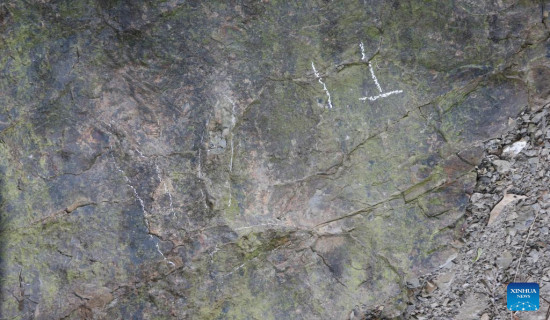- Sunday, 7 December 2025
Winter Celestial Spectacle
The night skies of this winter month would present pleasantly peculiar planets like Jupiter and Uranus, along with other charismatic celestial entities that could be perceived all over the heavens. The elusive planet Mercury and the red planet Mars would not be observable this month since they would be outshined by the sun's irradiance. They would be marching close to the sun through the compact constellations Libra (scales), Scorpius (scorpion), and Ophiuchus (serpent bearer). Planet Venus could be seen in the southeastern sky very late in the night before sunrise. It could be visualised in the vast constellation Virgo (maiden). It would be sliding superbly by the sparkling jewel-mimicking binary star Spica (Chitra), which would be queerly 250 light-years away. The mighty planet Jupiter could be applauded after sunset in the eastern sky. It would be ascending in the southern sky until late in the night. It would then sink towards the western horizon and fade out of sight by sunup. It would be rejoicing in the sprawling barren-alike expanse in the southern section of the puny constellation Aries (ram). Moreover, on November 3, the giant planet Jupiter would be in opposition to the Sun and also make its closest approach to Earth. It would be the best time to photograph Jupiter and its Galilean moons and delve into the dramatic details of Jovian clouds. The ringed planet Saturn with its magnificent moons could be marvelled at in the evening in the eastern sky after sundown. It would then be climbing high in the southern sky. It would slowly descend towards the western horizon and be evanescent by midnight. It would be glistening as a luminous speck of light in the southern realm of the comprehensive constellation Aquarius (water bearer). Amazing Saturn planetary nebula NGC 7009 with a greenish-yellow hue and an odd open star cluster comprising of four stars designated as Messier 73 have been nesting in Saturn’s vicinity. They would ostensibly be between 5200 and 2500 light-years away.
The far-flung planet Uranus would be gleaming like a spot of light to the east of Jupiter in the sparse segment of the constellation Aries. It would be discernible in the eastern sky after nightfall. It would be flying aloft in the western sky until almost midnight. It would then creep towards the southern horizon before breaking dawn. On November 13, Uranus would be in opposition to the sun. This grey-green planet would also be nearest to Earth. Due to its distance, it would appear as a tiny blue-green pinprick in all but the most powerful telescopes. Distant planet Neptune would be noticed as a glowing bluish dot of lambent light in the southeastern sky well after dusk. It would be sailing in the southern sky till midnight. It would thereafter slip down towards the western horizon before the wee hours of the night. It could be cherished below the confounding circlet-asterism of the captivating constellation Pisces (fishes), seen with a strangely stretching V-contour. On November 13, the new moon could be manifested, while on November 27, the full moon could be enjoyed. This full moon has been known as the beaver full moon because during this time of year, the beaver traps would be set before the swamps and rivers would freeze. The popular festivals of Bhai Tika and Chhath Parva would be solemnly celebrated with reverence on November 15 and 19, respectfully.
The long-running minor Taurid meteor shower will be exhibiting meagerly five to ten meteors per hour this year. This shower would, unusually, consist of two separate streams. The first one would be generated by minute grains left behind by the arcane asteroid 2004 TG10 with an orbital period of 3.34 years and a maximum shower expected on around November 13. It would be active from October 13 to December 2. The second shower would be developed from small particles left behind by Comet 2P/Encke. The shower would run annually from September 23 to November 12. It would intensify this year from the midnight of November 4 until the morning of November 5. The second-quarter moon would bitterly block the dim meteors. However, avid skygazers could still patiently relish a few good, shiny streaks of meteors. Meteors would emerge from the radiant standing in the constellation Taurus (bull) from the neighbourhood of attractive Aldebaran (Rohini) and the outlandish open star cluster the Pleiades (seven sisters) merely 444 light-years away. The red giant star Aldebaran would be perhaps 65 light-years away. When earth would be ploughing through the meteor stream of comet debris in space, a meteor shower would result. The pint-sized pieces would disintegrate in the atmosphere, fostering coruscating meteors. The comet has been called after the German astronomer Franz Encke, who correctly calculated the comet’s time of its track around the Sun to fairly 3.3 years.
The average Leonid meteor shower would display in the eastern sky up to 15 meteors per hour at its peak, which would befall this year in 2023 from the night of November 17 until the morning of November 18. The waxing crescent moon would set before midnight and thus leave tenebrous skies, not hampering the opportunity to watch the thrilling early morning show of scintillating shooting stars. Leonids could be looked at pleasingly from dark locations after midnight. Meteors would be exuding exclusively from the radiant point lying near the star Algieba, which would be dwelling in the sickle-asterism of the constellation Leo (lion). This shower has been deemed delightfully unique since its cyclonic climax would presumably occur every 33 years, where hundreds of meteors per hour could be overwhelmingly witnessed. Their last surge occurred in 2001. Leonids have been produced by dusty dregs left behind by the comely comet 55P/Tempel-Tuttle with an orbital period of barely 33.17 years, which was acknowledged independently in 1865 and 1866 by French and American astronomers William Tempel and Horace Tuttle. Leonids would be evident from November 6 to November 30. Algieba is the baffling binary star, which would be basically 130 light-years away.
For the first time, a NASA probe has been deployed on a journey towards an astounding potato-shaped metal-rich asteroid dubbed 16 Psyche, which would allegedly contain a huge amount of iron, nickel, and gold. Psyche would be utterly 226 kilometres wide. It has been gliding through the bizarre asteroid belt existing between the paths of Mars and Jupiter, requiring almost five years for one revolution around the Sun. The craft would arrive at Psyche tentatively in August 2029. Italian astronomer Annibale de Gasparis identified Psyche in 1852 and named it after the Greek deity of the soul. Furthermore, by investigating Psyche, experts could learn accurately about the inner cores of copious earth-like planets. The Psyche probe had blasted off atop a SpaceX Falcon Heavy rocket, but to complete its whooping 3.6-billion-kilometre voyage, it would utilise a more efficient form of propulsion. Psyche’s solar arrays would convert light into electricity essential for four Hall-effect thrusters. They use electromagnetic fields to accelerate and expel ions (charged atoms) of xenon, which would be the same inert gas indispensible in car headlights and plasma TVs. The actual force it would exert at a given moment would be roughly equal to the weight of an AA battery in the palm of one’s hand. In the cryo-void of space, the probe would whizz continuously for tens of thousands of kilometres an hour. Since deep space missions have been demanding faster and higher data rates for communications, NASA will be introducing laser-based broad-band communication systems for radio-frequency-based ones. The Psyche ship would be testing out onboard technology experiments to demonstrate a ten-fold augmentation of traditional telecom data rates, enabling reliable transmission of sharper-resolution images, the deluge of scientific data, and secure streaming video. NASA would attempt to shoot its laser beam from the JPL facility on Table Mountain in California, with the spacecraft firing its signal back to Caltech's Palomar Observatory. This technology would eventually be implemented on future human missions to Mars. Psyche has been carrying a sophisticated suite of dedicated scientific instruments to examine the asteroid's chemical and mineral composition and search for signs of an ancient magnetic field. Psyche's old radio system would be activated agilely and scrutinise the asteroid's gravity field using the Doppler Effect.
(Dr. Shah is an academician at NAST and patron of NASO.)

















